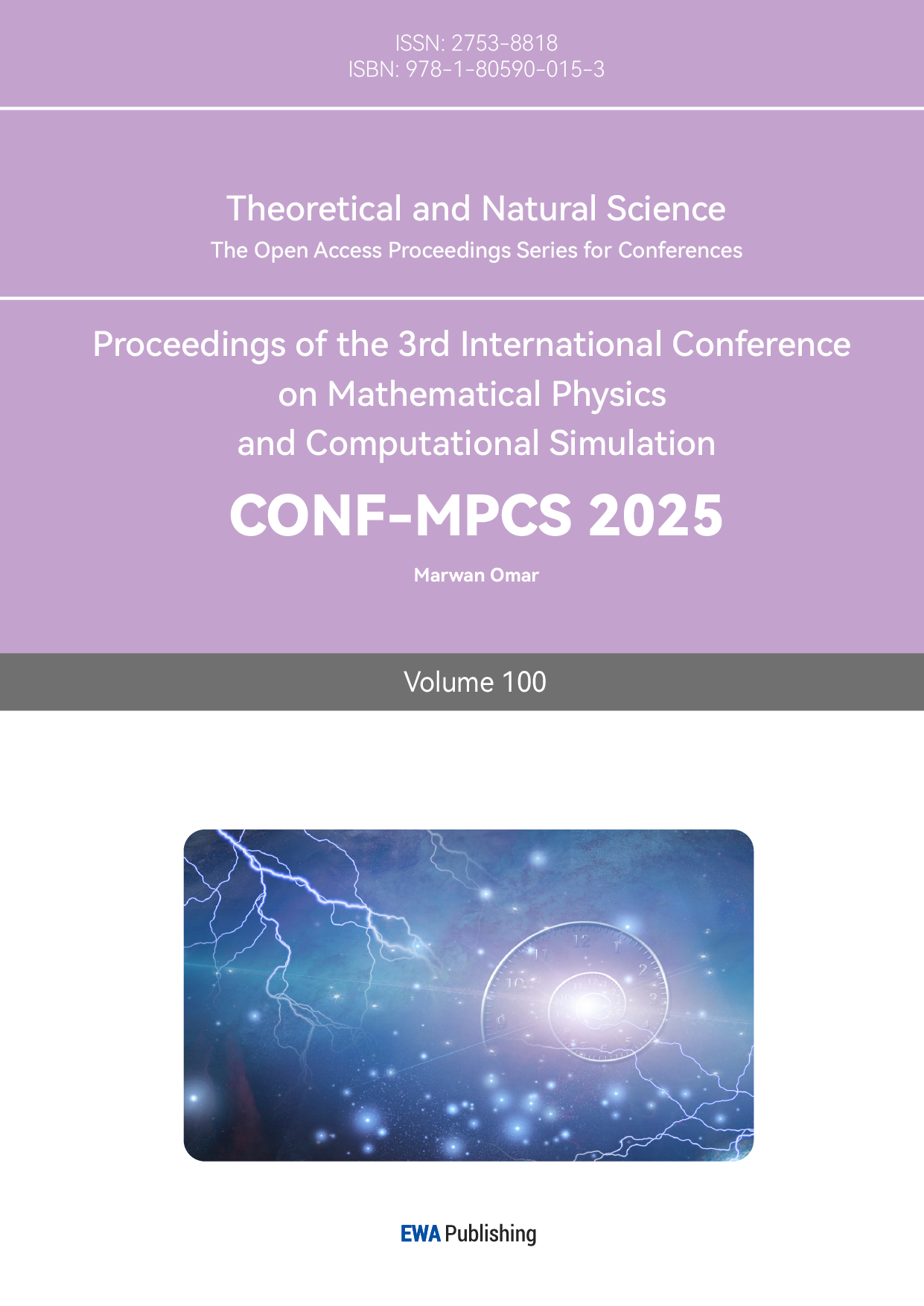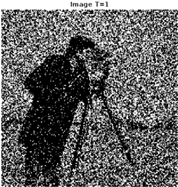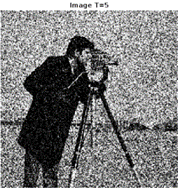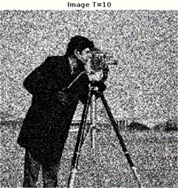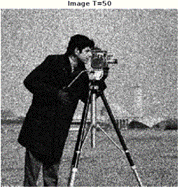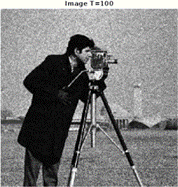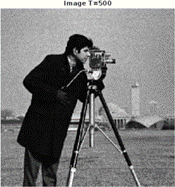1. Introduction
Image reconstruction has emerged as a pivotal process in computer vision, driven by advances in artificial intelligence. This paper introduces a novel algorithm that integrates Poisson and Bernoulli distributions with a maximum likelihood estimator to effectively restore degraded, blurred, or low-resolution images [1]. Unlike traditional Bayesian methods that rely heavily on predetermined probabilistic models and extensive prior information, our approach exploits the statistical characteristics of single-photon image sensors to achieve a more unbiased recovery of image details. The algorithm leverages the Poisson distribution to model the inherent probability of pixel intensity values and incorporates the binary output of the sensor through the Bernoulli distribution, ultimately optimizing the reconstruction process under a maximum likelihood framework.
The method is particularly well-suited for applications where clarity and precision in image data are critical [2,3]. In autonomous driving, for instance, enhanced image reconstruction enables more reliable object detection and scene understanding, thereby facilitating safer navigation in complex real-world environments. Similarly, in the restoration of historical and artistic works, our algorithm can digitally recover lost or damaged visual details, contributing significantly to the preservation of cultural heritage. Moreover, the technique demonstrates promising results in satellite and aerial image processing, where it improves the resolution and reliability of remote sensing data, and in astronomy, where it aids in clarifying observations from space telescopes.
Experimental results reveal that increasing the number of trials enhances the Peak Signal-to-Noise Ratio (PSNR) of the reconstructed images, indicating a reduction in noise and improvement in image quality. Overall, this research contributes to the advancement of image reconstruction techniques, offering a robust tool for various AI applications in computer vision and beyond.
2. The fields with good expectation of the reconstruction of images of computer vision and AI
2.1. Autonomic driving technology and self-driving car
First, the self-driving car is a typical application of AI, which is anticipated to have a very optimistic prospect and forecast, and it has already made a great impact on society [4-5]. Granted, the research of self-driving cars was looked down when it was rolled out at first; still, it surely marked the first far reaching integration of AI into the human society, meanwhile, after one-decade-long growing research associated to technology and self-driving, the self-driving cars have already brought a diverse and positive socio-economic impact [6]. These developments are inseparable from the autonomic computer vision.
Reconstruction of images is really important to identify the object and scene during the driving process: AI reconstructs blurry or obscured images to help the visual sensor of AI to detect scenes better [7]. For instance: sharpening the blurry images can enhance the ability of perception in self-driving cars, helping them to detect pedestrians, obstacles, and road signs, then make the proper decision.
Besides, autonomic vision and image reconstruction are also vital in 3D mapping and scene understanding: depth estimation and scene reconstruction improve navigation and collision avoidance. Depth estimation is the process of determining the distance between an object and a camera or sensor. AI enhances depth estimation through a variety of methods, such as Stereo Vision (Binocular Depth Estimation), Monocular Depth Estimation (Single Camera), and Structure from Motion (SfM) and SLAM (Simultaneous Localization and Mapping) [8-9].
With all these in mind, the autonomous driving system of an autonomous vehicle includes a complex visual recognition system that includes a range of functions including image classification, object detection, segmentation, and localizing, all of which are vital to basic visual operations [10]. Object detection is a key branch of computer vision that has greatly benefited from advances in deep learning, particularly convolutional neural networks (CNNS).
Here are some advantages of self-driving cars:
1. For users: obviously, when AI helps humans drive the car, people can get reduced stress, faster commutes, reduced travel times, enhanced user productivity, optimum fuel consumption, reduced risk of making wrong decision. These cars can be programmed to drive defensively, stay clear of blind spots, and follow speed limits strictly [9].
2. For governors: self-driving can reduce the frequency of traffic accidents, reduce the pressure of the government in this area, and automatic driving can ensure that the speed of cars does not exceed the limit, improve the overall traffic environment and safety.
3. For environment: with the optimal fuel consumption and fully automated obstacle identification system, autonomous electric vehicles would introduce a greener mode of transport, leading to less greenhouse and noise pollution.
2.2. Restoration of Historical and Artistic Works
Artifacts including paintings, drawings, prints, mosaics, sculptures, historical structures and monuments, as well as archaeological sites present a key part of our cultural heritage. They often represent one culture’s most memorable history. However, with the passing of time, lots of artifacts have become blurry and misty. One of the foremost challenges associated with the artwork is the propensity of the materials utilized in its creation to suffer from cracks, fractures, stains, fading, and blurred colors over time.
The origins of this damage can stem from both natural and factitious factors. Natural causes encompass phenomena such as wars, fires, earthquakes, and other disasters, while factitious factors include accidental occurrences and pollution, the latter often exacerbated by climate change, such as acid rain [10]. The more serious problem is our regular environment's light, heat, moisture, and pollution levels can also lead to harmful chemical and physical reactions in artwork.
To solve this problem, nowadays, highly developed artificial intelligence has one branch that can help humans to reconstruct the images of artifacts or even store the heritage better, which can be really helpful in the exploring of one specific culture’s history.
2.3. Satellite and Aerial Image Processing
Remote sensing stands as a pivotal Earth observation technique, capable of acquiring imagery and deriving object information without the need for physical contact. This is accomplished through the deployment of sensors mounted on satellites or aircraft. Among its various branches, optical remote sensing imaging holds a prominent position. The outputs of optical remote sensing have found extensive applications across numerous real-world domains. These include global land-cover mapping, vegetation monitoring, water quality assessment, urban climate and environmental studies, forest fire detection, mineral exploration, oil spill identification, and precision agriculture.
Optical remote sensing images has three classification resolutions: first, the spatial resolution, such as IKONOS and the Chinese Gaofen-1 system; second, the spectral resolution, such as Hyperion, AVIRIS, and ROSIS; at last, the temporal resolution such as MODIS.
The emergence of remote sensing images featuring high spatial-spectral-temporal resolution has unlocked immense potential for advancements in remote sensing data processing, which includes the feature pre-processing (e.g. feature representation and hyperspectral band selection), and the specific applications (e.g. supervised and unsupervised classification, and change detection). Nevertheless, conventional remote sensing image processing techniques are grappling with the novel challenges posed by the heightened complexity of the problem, encompassing both data and model complexity.
Therefore, reconstruction of images is so significant for remote sensing. Having a good algorithm for reconstructing the images is necessary then.
2.4. Astronomy and Space Exploration
Enhancement of images got by space telescopes: artificial intelligence can reconstruct astronomical images from noisy or incomplete data to improve space observations.
3. The application and real-world examples of these fields in research
3.1. Autonomic driving technology and self-driving car
Applications:
• Enhancing Low-Visibility Images: Problem: Fog, rain, snow, and low-light conditions ---- reduce camera visibility, making it difficult for self-driving cars to detect objects. Solution: AI-based image denoising and enhancement, reconstructs clearer images from noisy or blurry inputs.
• Filling in Occluded or Missing Data: Problem: Some objects in the environment may be blocked by other vehicles, trees, or buildings. Solution: AI reconstructs occluded parts of the image using inpainting, filling in missing pixels based on context).
• Super-Resolution for Camera Feeds: Problem: Low-resolution camera feeds may lack the details needed for accurate object detection. Solution: AI applies super-resolution techniques to upscale images and enhance details.
• Sensor Fusion and Data Reconstruction: Problem: Self-driving cars use multiple sensors, but some sensors may fail or provide incomplete data. Solution: AI reconstructs missing information by fusing data from working sensors.
• Road Damage and Lane Reconstruction: Problem: Poorly marked roads, faded lane lines, or potholes can confuse a self-driving car. Solution: AI reconstructs missing lane markings and road details using image segmentation and deep learning models.
Real-World examples:
• Tesla Vision – Uses image enhancement and occlusion reconstruction to improve object detection.
• Waymo’s 3D Scene Reconstruction – Fuses camera and LiDAR data to predict occluded objects and reconstruct complex urban scenes.
• NVIDIA Drive – Uses super-resolution AI to enhance low-quality images for better self-driving performance.
• Mobileye (Intel) – Applies image reconstruction for lane detection on unmarked or damaged roads.
3.2. Restoration of Historical and Artistic Works
Applications: Restoring Old and Damaged Photographs. Reconstructing Lost or Destroyed Paintings. Enhancing Ancient Texts and Manuscripts. Digital Colorization of Black-and-White Images. Virtual Reconstruction of Destroyed Monuments & Architecture.
Real-World Examples: Rembrandt’s AI-Generated “The Night Watch” – AI reconstructed missing sections of the painting using deep learning. Dead Sea Scrolls Restoration – AI helped reconstruct fragmented texts that were unreadable for decades. 3D Reconstruction of Pompeii – AI digitally recreated the lost city using historical data. Google’s “Art & Culture” Project – Uses AI to restore and colorize historical images.
3.3. Satellite and Aerial Image Processing
Applications: Cloud Removal and Image Enhancement. Super-Resolution for Low-Quality Satellite Images. Restoration of Historical Satellite Images. Aerial Image Reconstruction for Disaster Response. 3D Terrain Reconstruction for Urban Planning.
Real-World Examples: Google Earth AI Cloud Removal – Uses deep learning to reconstruct satellite images covered by clouds. NASA’s Super-Resolution Satellite Imaging – Enhances low-quality images for climate monitoring. AI in Disaster Recovery – Used in post-disaster satellite imagery reconstruction after hurricanes and wildfires. 3D Urban Reconstruction for Smart Cities – AI-generated 3D maps improve urban planning.
3.4. Astronomy and Space Exploration
Applications: Enhancing Low-Resolution Space Telescope Images. Black Hole Image Reconstruction. Restoration of Historical Space Images. Deep-Space Object Detection and Enhancement. AI-Based Mars and Lunar Image Reconstruction.
Real-world examples: Event Horizon Telescope’s Black Hole Image (2019) – AI reconstructed the first image of a black hole. NASA’s AI-Enhanced Hubble Images – AI improves clarity of distant galaxies and nebulae. Apollo Moon Mission Image Restoration – AI restored old Moon landing photographs. AI-Assisted Mars Rover Imaging – AI reconstructs Martian landscapes for scientific analysis.
4. The algorithm of reconstructing images
4.1. Poisson process mathematical model
Suppose that there is a homogeneous pattern consisting of N pixels, and its underlying intensity is a constant \( λ \) . For a sensor with \( N \) pixels \( {X_{1}},{X_{2}},…,{X_{N}} \) , according to Poisson statistics ( \( P({X_{N}}={x_{n}})=\frac{{λ^{{x^{n}}}}}{{x_{n}}!{e^{-λ}}} \) ) , the probability of observing a pixel - value is determined by the Poisson probability.
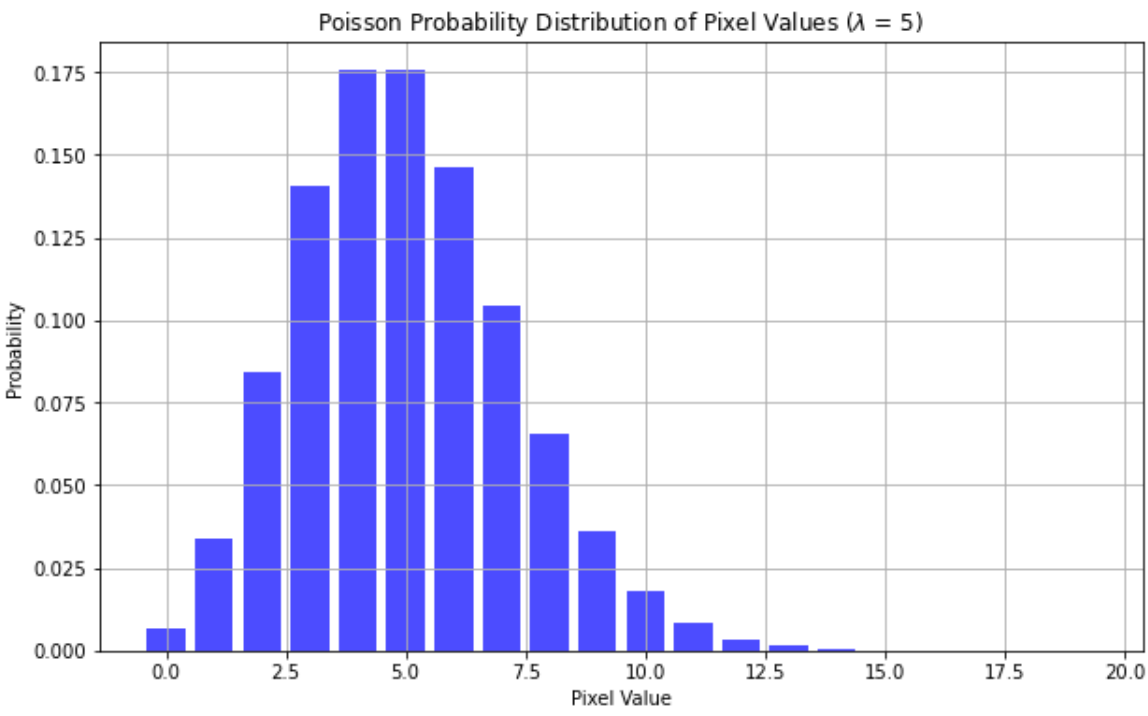
Figure 1: Poisson Probability Distribution of Pixel Values (λ = 5) (Picture credit : Original).
Figure 1 shows the probability of observing one pixel’s value when λ = 5. The graph clearly illustrates that when the pixel value is about 5, the probability of being observed is the highest; when the value is larger than 10, the probability is more and more close to 0. With the increasing of pixel value, the probability first increases until it gets the maximum, and then decreases, which tends to present a quadratic function.
4.2. Bernoulli mathematical model
Because of the characteristic of one-bit single-photon image sensor, it does not output the explicit number of photon, which reaches the sensor. Instead, it uses binary value, fitting the value of Bernoulli random variable \( {Y_{n}} \) (0,1).
\( P({Y_{n}}=0)=P({X_{n}}={x_{n}})={e^{-λ}} \) (1)
\( P({Y_{n}}=1)=1-{e^{-λ}} \) (2)
4.3. Maximum likelihood estimator
Defining \( {y_{n}} \) as a binary number taking values of either 0 or 1, it follows that the log-likelihood is:
\( LogL(λ|y)=log{\lbrace Π_{n=1}^{N}{(1-{e^{-λ}})^{{y_{n}}}}{({e^{-λ}})^{1-{y_{n}}}}\rbrace }=\sum _{n=1}^{N}{\lbrace y_{n}}log{(1-{e^{-λ}})}-λ(1-{y_{n}})\rbrace \) (3)
4.4. Definition of confidence interval
The estimated interval of the population parameter constructed by the sample statistics. The confidence interval of \( λ \) :
\( λ±{z_{α}}/2KN_{p}^{-\sqrt[]{λ}/2} \) (4)
4.5. Purpose
In order to restore a damaged or blurred image to a perfect one, many solutions related to statistics and mathematics have been used in extracting key information from incomplete or noisy data. Our solution is based on the device---single-photon image sensor.
4.6. Reason of choosing single-photon image sensor
The photon is the smallest energy unit that the light can be detected, which can also provide the important data for image reconstruction.
4.7. Simulation
4.7.1. Results (when T is constant (T = 100) and varies t)
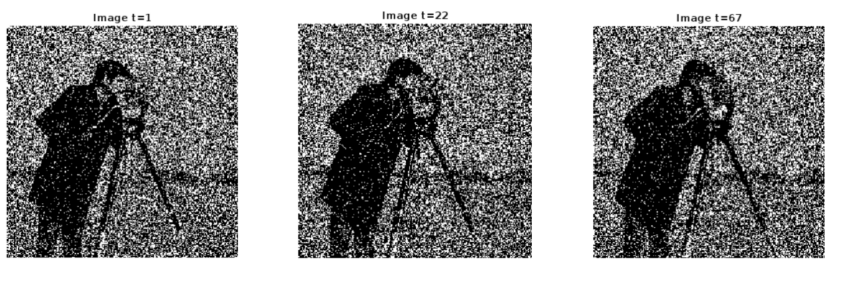
Figure 2: The pixels of the image when T is constant (Picture credit : Original).
Figure 2 shows when T is constant, the change of t can not affect the pixels of the image. Since T is the total number of times of experiments, and t is just the number of times chosen from the experiments. Therefore, each t carries similar pixels of images.
4.7.2. Results (when t is constant and varies T)
|
|
|
|
|
|
Figure 3: The pixels of the images with the increasing of T (Picture credit : Original).
Obviously, Figure 3 shows with the increasing of T, the pixels of the images increases. It proves that with the increasing of the times of experiments, the error and deficiency of the images will decrease a lot.
4.7.3. With different values of T (and t) the values PSNR (db)
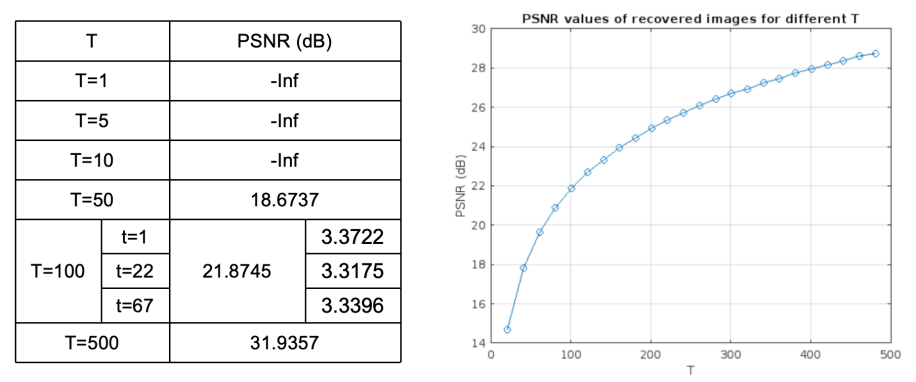
Figure 4: The graph with different values of T (and t) the values PSNR (db) (Picture credit : Original).
According to the graphs’ data, when the T is very small (equal or lower than 10), the PSNR is close to negative infinity; after that, as the increasing of T, PSNR constantly increases, and the rate of increasing decreases as T increases; when the T is constant, t varies with in its range, the value of PSNR for each t is nearly constant. Figure 4 tends to present a root function.
5. Conclusion
This paper has presented a novel image reconstruction algorithm that integrates Poisson and Bernoulli distributions with a maximum likelihood estimator, specifically designed for computer vision and artificial intelligence applications. By leveraging the statistical properties of single-photon image sensors, the proposed method addresses the limitations of conventional approaches that rely heavily on predetermined probabilistic models and extensive prior information. Instead, the algorithm capitalizes on the inherent randomness and discrete characteristics of photon detection to produce a more unbiased and detailed reconstruction of degraded, blurred, or low-resolution images.
Experimental evaluations demonstrate that as the total number of trials (T) increases, the peak signal-to-noise ratio (PSNR) of the reconstructed images shows a significant improvement. This indicates that with more experiments, the model effectively reduces noise and accurately recovers missing pixel information. Moreover, the experiments revealed that variations in the selection subset (t) have a minimal impact on the overall reconstruction quality when T remains constant, underscoring the stability and robustness of the method. The Matlab implementation further validates the algorithm’s capability by accurately predicting and filling in the missing pixel values according to their hues, thereby restoring the image with enhanced clarity and detail.
The versatility of this algorithm is evident in its wide range of applications. In the field of autonomous driving, high-quality image reconstruction is crucial for reliable object detection, scene understanding, and real-time decision-making under challenging environmental conditions. By enhancing blurry or occluded images, the algorithm can improve the performance of self-driving systems, potentially leading to safer navigation in complex urban scenarios. Similarly, the restoration of historical and artistic works can greatly benefit from this technique, where the digital recovery of faded or damaged images plays a key role in cultural heritage preservation and restoration projects. Additionally, in satellite and aerial image processing, the method enhances remote sensing data by removing noise and filling in gaps caused by atmospheric interference, thus providing more precise information for urban planning and environmental monitoring. In astronomy, the ability to reconstruct low-resolution images from space telescopes can significantly enhance our observations of distant celestial bodies, contributing to advancements in astrophysics research.
References
[1]. Lin, D. J., Johnson, P. M., Knoll, F., & Lui, Y. W. (2023). Artificial Intelligence for MR Image Reconstruction: An Overview for Clinicians. Clinical Neuroradiology.
[2]. Gaber, J. A., Youssef, S. M., & Fathalla, K. M. (2023). The Role of Artificial Intelligence and Machine Learning in Preserving Cultural Heritage and Art Works via Virtual Restoration. ISPRS Annals of Photogrammetry, Remote Sensing and Spatial Information Sciences, X-1/W1-2023, 185-190.
[3]. Zhong, Y., Ma, A., Ong, Y. S., Zhu, Z., & Zhang, L. (2017). Computational Intelligence in Optical Remote Sensing Image Processing. Information Sciences, 411, 1-2.
[4]. Zhu, X., Liu, Z., Cambria, E., Yu, X., Fan, X., Chen, H., & Wang, R. (2025). A client–server based recognition system: Non-contact single/multiple emotional and behavioral state assessment methods. Computer Methods and Programs in Biomedicine, 260, 108564.
[5]. Wang, R., Zhu, J., Wang, S., Wang, T., Huang, J., & Zhu, X. (2024). Multi-modal emotion recognition using tensor decomposition fusion and self-supervised multi-tasking. International Journal of Multimedia Information Retrieval, 13(4), 39.
[6]. Wang, F., Ju, M., Zhu, X., Zhu, Q., Wang, H., Qian, C., & Wang, R. (2025). A Geometric algebra-enhanced network for skin lesion detection with diagnostic prior. The Journal of Supercomputing, 81(1), 1-24.
[7]. Zhao, Z., Zhu, X., Wei, X., Wang, X., & Zuo, J. (2021, June). Application of Workflow Technology in the Integrated Management Platform of Smart Park. In 2021 IEEE 4th Advanced Information Management, Communicates, Electronic and Automation Control Conference (IMCEC) (Vol. 4, pp. 1433-1437). IEEE.
[8]. Zhang, Y., Zhao, H., Zhu, X., Zhao, Z., & Zuo, J. (2019, October). Strain Measurement Quantization Technology based on DAS System. In 2019 IEEE 3rd Advanced Information Management, Communicates, Electronic and Automation Control Conference (IMCEC) (pp. 214-218). IEEE.
[9]. Luisier, F., Vonesch, C., Blu, T., & Unser, M. (2010). Fast Interscale Wavelet Denoising of Poisson-Corrupted Images. Signal Processing, 90(2), 415-427.
[10]. Wunderlich, C. (2023). Maximum-Likelihood Method for Image Reconstruction of Gamma-Ray-Detectors Seminar of Statistical Methods.
Cite this article
Li,M. (2025). Reconstructing of Images’ Application in Computer Vision and AI. Theoretical and Natural Science,100,255-262.
Data availability
The datasets used and/or analyzed during the current study will be available from the authors upon reasonable request.
Disclaimer/Publisher's Note
The statements, opinions and data contained in all publications are solely those of the individual author(s) and contributor(s) and not of EWA Publishing and/or the editor(s). EWA Publishing and/or the editor(s) disclaim responsibility for any injury to people or property resulting from any ideas, methods, instructions or products referred to in the content.
About volume
Volume title: Proceedings of the 3rd International Conference on Mathematical Physics and Computational Simulation
© 2024 by the author(s). Licensee EWA Publishing, Oxford, UK. This article is an open access article distributed under the terms and
conditions of the Creative Commons Attribution (CC BY) license. Authors who
publish this series agree to the following terms:
1. Authors retain copyright and grant the series right of first publication with the work simultaneously licensed under a Creative Commons
Attribution License that allows others to share the work with an acknowledgment of the work's authorship and initial publication in this
series.
2. Authors are able to enter into separate, additional contractual arrangements for the non-exclusive distribution of the series's published
version of the work (e.g., post it to an institutional repository or publish it in a book), with an acknowledgment of its initial
publication in this series.
3. Authors are permitted and encouraged to post their work online (e.g., in institutional repositories or on their website) prior to and
during the submission process, as it can lead to productive exchanges, as well as earlier and greater citation of published work (See
Open access policy for details).
References
[1]. Lin, D. J., Johnson, P. M., Knoll, F., & Lui, Y. W. (2023). Artificial Intelligence for MR Image Reconstruction: An Overview for Clinicians. Clinical Neuroradiology.
[2]. Gaber, J. A., Youssef, S. M., & Fathalla, K. M. (2023). The Role of Artificial Intelligence and Machine Learning in Preserving Cultural Heritage and Art Works via Virtual Restoration. ISPRS Annals of Photogrammetry, Remote Sensing and Spatial Information Sciences, X-1/W1-2023, 185-190.
[3]. Zhong, Y., Ma, A., Ong, Y. S., Zhu, Z., & Zhang, L. (2017). Computational Intelligence in Optical Remote Sensing Image Processing. Information Sciences, 411, 1-2.
[4]. Zhu, X., Liu, Z., Cambria, E., Yu, X., Fan, X., Chen, H., & Wang, R. (2025). A client–server based recognition system: Non-contact single/multiple emotional and behavioral state assessment methods. Computer Methods and Programs in Biomedicine, 260, 108564.
[5]. Wang, R., Zhu, J., Wang, S., Wang, T., Huang, J., & Zhu, X. (2024). Multi-modal emotion recognition using tensor decomposition fusion and self-supervised multi-tasking. International Journal of Multimedia Information Retrieval, 13(4), 39.
[6]. Wang, F., Ju, M., Zhu, X., Zhu, Q., Wang, H., Qian, C., & Wang, R. (2025). A Geometric algebra-enhanced network for skin lesion detection with diagnostic prior. The Journal of Supercomputing, 81(1), 1-24.
[7]. Zhao, Z., Zhu, X., Wei, X., Wang, X., & Zuo, J. (2021, June). Application of Workflow Technology in the Integrated Management Platform of Smart Park. In 2021 IEEE 4th Advanced Information Management, Communicates, Electronic and Automation Control Conference (IMCEC) (Vol. 4, pp. 1433-1437). IEEE.
[8]. Zhang, Y., Zhao, H., Zhu, X., Zhao, Z., & Zuo, J. (2019, October). Strain Measurement Quantization Technology based on DAS System. In 2019 IEEE 3rd Advanced Information Management, Communicates, Electronic and Automation Control Conference (IMCEC) (pp. 214-218). IEEE.
[9]. Luisier, F., Vonesch, C., Blu, T., & Unser, M. (2010). Fast Interscale Wavelet Denoising of Poisson-Corrupted Images. Signal Processing, 90(2), 415-427.
[10]. Wunderlich, C. (2023). Maximum-Likelihood Method for Image Reconstruction of Gamma-Ray-Detectors Seminar of Statistical Methods.





